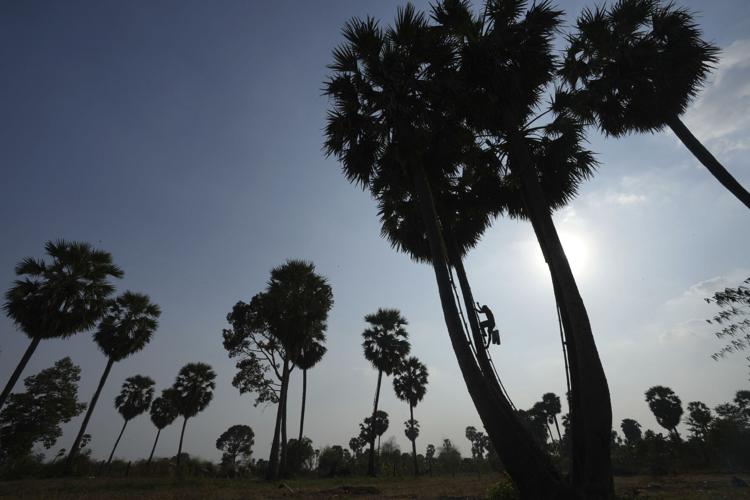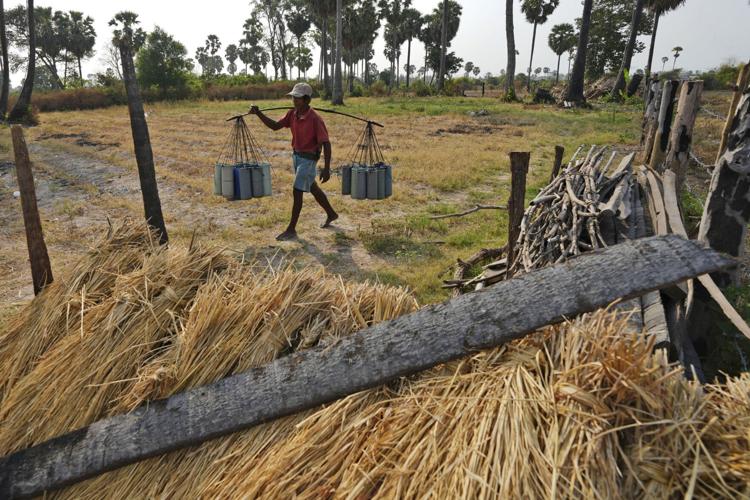The Challenging World of Palm Sugar Production in Cambodia
The art of collecting sap from palm trees has been a cherished tradition among Cambodian families for generations. Chin Choeun, a 54-year-old veteran in the field, epitomizes this legacy, having inherited the skill from his father.
With nearly four decades of experience, Choeun has become one of Cambodia’s most skilled palm tree climbers, dedicated to preserving this age-old practice. However, despite its cultural significance, the profession of palm sugar harvesting faces numerous challenges.
Choeun, now contemplating retirement due to age-related safety concerns, reflects on the dwindling interest among the younger generation. The arduous nature of the work, coupled with its inherent dangers, dissuades many from following in their ancestors’ footsteps.
Unlike previous generations, today’s Cambodian youth have access to a wider array of employment opportunities, both within their rural communities and beyond. The allure of urban jobs or overseas employment in countries like Thailand, South Korea, or Japan often outweighs the appeal of traditional agricultural work, further contributing to the decline of palm sugar harvesting.
Nonetheless, the process of collecting palm sap remains a labor-intensive endeavor that requires meticulous attention to detail. From the early morning climb to the painstaking boiling of sap over an open fire, each step demands skill and precision. Choeun, accompanied by his wife Chin Ith, meticulously executes each task, ensuring the production of high-quality palm sugar.

Despite its challenges, palm sugar harvesting remains a vital source of income for many Cambodian families. With each day’s harvest yielding approximately 10 kilograms of sugar, Choeun earns a modest income by selling his produce to local vendors. However, as urbanization encroaches on rural landscapes, the sustainability of this traditional practice comes into question.
Beyond the realm of sugar production, palm trees play a multifaceted role in Cambodian daily life. From providing materials for roofing and handicrafts to serving as a source of food and drink, these versatile trees are indispensable to rural communities. Additionally, the palm tree holds symbolic significance as the official tree of Cambodia, embodying the country’s cultural heritage.
Despite their cultural and economic significance, Cambodia’s palm trees face mounting threats from deforestation and urban expansion. As wild palm trees diminish in number, efforts to preserve and protect these invaluable resources become increasingly urgent.
Initiatives aimed at sustainable palm cultivation and forest conservation are crucial in safeguarding Cambodia’s natural heritage for future generations. In the face of rapid societal changes and economic shifts, traditional practices such as palm sugar harvesting stand at a crossroads.
Related News:
- Exciting News: MiSci Museum Stays Put in Schenectady!
- Suzanne Somers Snubbed at Oscars: Husband Alan Hamel Speaks Out!
- Jimmy Fallon Lights Up Albany: A Fun-Filled Saturday Adventure!
While the allure of modernity beckons, the preservation of cultural heritage remains paramount. As custodians of this age-old tradition, individuals like Chin Choeun carry the weight of history on their shoulders, striving to pass down their craft to future generations amidst an ever-evolving landscape.

